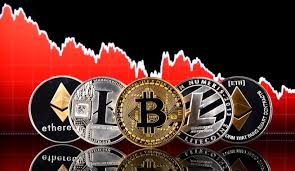Understanding Crypto Trading Order Types 4

Crypto Trading Order Types
In the world of cryptocurrency trading, understanding the different types of orders is crucial for executing successful transactions. Whether you are a novice or an experienced trader, knowing how to utilize these Crypto Trading Order Types click here can make a significant difference in your trading performance. This article will explore the various order types available to traders in the crypto market.
1. Market Orders
Market orders are one of the simplest order types. When a trader places a market order, they are buying or selling a cryptocurrency at the current market price. This type of order guarantees the execution of the trade but does not ensure the price at which the order will be executed.
Market orders are typically used when a trader wants to enter or exit a position quickly. However, one must be cautious, as market conditions can lead to slippage—when the execution price differs from the expected price due to volatility.
2. Limit Orders
Limit orders allow traders to set a specific price at which they want to buy or sell a cryptocurrency. A buy limit order will only be executed at or below the specified price, while a sell limit order will only be executed at or above the specified price. Limit orders are useful for capturing price movements without the need for constant market monitoring.
Traders use limit orders when they anticipate that the price will reach a certain level before reversing. This order type allows for better price control and can help avoid the pitfalls of market order execution during times of high volatility.

3. Stop-Loss Orders
Stop-loss orders are designed to limit potential losses on a trade. A stop-loss order becomes a market order once the specified price is reached. For example, if a trader buys Bitcoin at $40,000 and sets a stop-loss order at $38,000, the position will automatically sell if the price falls to that level, minimizing potential losses.
This order type is essential for risk management. It provides a safety net for traders, allowing them to protect their capital without having to constantly monitor the market.
4. Stop-Limit Orders
Stop-limit orders combine elements of both stop-loss and limit orders. When the stop price is reached, a limit order is triggered at a specified limit price. This order type provides traders with control over the execution price while still being able to limit their losses.
However, traders must be cautious with stop-limit orders, as they could result in the trade not being executed if the limit price is not met, especially in a volatile market.
5. Trailing Stop Orders
Trailing stop orders are similar to stop-loss orders, but they have a dynamic component. Instead of being a fixed price, the stop price adjusts in relation to the market price movement. For instance, if a trader sets a trailing stop order at a specific percentage below the market price, the stop price will rise as the market price rises, locking in profits while providing a safety mechanism against losses.
This order type is particularly useful for traders who want to capitalize on upward price movements while still controlling risk.

6. Fill or Kill Orders
A fill or kill order demands that the order is filled immediately and in its entirety. If the entire order cannot be executed at that moment, it will be canceled. This order type is typically used by traders who want to enter or exit a position quickly without partial fills.
This ensures that the trader’s intended quantity is executed at the specified price, but it also means that if market conditions do not support immediate execution, the opportunity may be lost.
7. One Cancels Other (OCO) Orders
One Cancels Other (OCO) orders are a combination of a limit order and a stop-loss order. When an OCO order is placed, two orders are set: one is a limit order to take profit, and the other is a stop order to limit losses. Once one of these orders is executed, the other one is automatically canceled.
This type of order is beneficial for traders who want to maximize their profit potential while also protecting against significant losses. It allows for automated trading strategies while managing risk effectively.
Conclusion
Understanding and utilizing various crypto trading order types can significantly enhance a trader’s performance and risk management strategies. Market orders, limit orders, stop-loss orders, stop-limit orders, trailing stops, fill or kill orders, and OCO orders each serve distinct purposes and can be strategically employed based on market conditions and personal trading goals.
By mastering these order types, traders can improve their decision-making processes, optimize trade executions, and ultimately work towards consistent profitability in the ever-evolving world of cryptocurrency trading.
